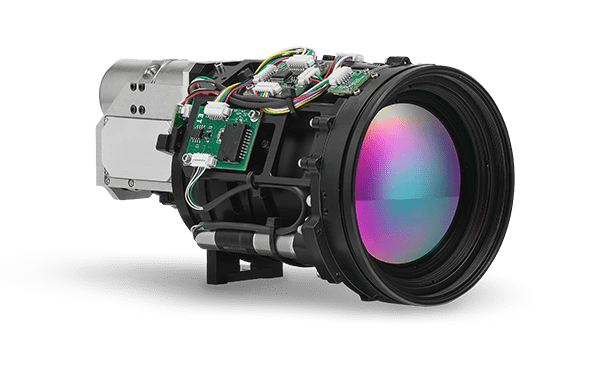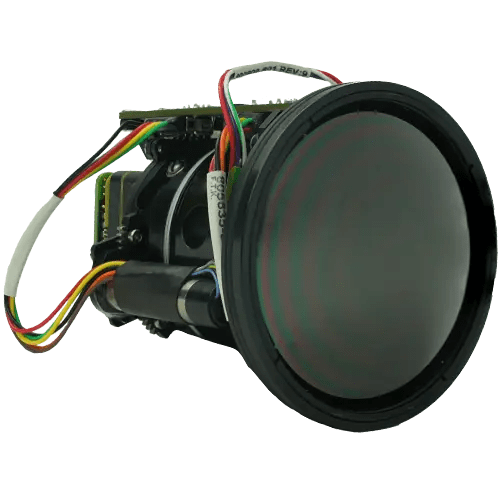In mission-critical UAV operations—whether defense, public safety, or industrial inspection—the quality and reliability of thermal imaging for drones can make the difference between success and failure. Operators depend on UAV camera modules to deliver clear, real-time intelligence in complete darkness, extreme temperatures, or high-vibration conditions. Yet integrating high-performance imaging systems into compact UAV platforms presents unique challenges.
From tethered Hoverfly TeUAS systems providing persistent ISR to agile Teal Drones performing low-light reconnaissance, engineers require EO/IR camera modules that maintain image clarity under stress, supported by shielded UAV cables and rugged connectors. This is where Mitas Electronics ensures thermal imaging for drones performs flawlessly in every environment.
Why Thermal Imaging for Drones Matters
UAV operators rely on thermal imaging for drones and EO/IR camera modules to:
- Make critical decisions: Detecting heat signatures, identifying objects, or monitoring infrastructure remotely demands precise thermal imaging for drones.
- Reduce mission risk: Poor image quality compromises search-and-rescue, ISR, and border surveillance.
- Enable geolocated intelligence: With onboard IMUs and GPS, UAV camera modules ensure precise mapping and targeting.
For example, the Northrop Grumman MQ-9 Reaper equipped with FLIR Duo Pro R combines thermal imaging for drones with visible EO sensors, enabling operators to identify targets in low-contrast environments. Without shielded UAV cables and EMI-resistant connectors, even the best EO/IR camera modules cannot deliver actionable ISR intelligence.
Understanding Thermal and EO/IR Camera Modules
Thermal Camera Modules
- FLIR Duo Pro R: Dual-sensor EO/IR gimbal with high-resolution thermal imaging for drones, IMU, and GPS for accurate georeferencing. Used in firefighting, SAR, and reconnaissance.
- FLIR Vue TZ20: Dual thermal zoom UAV camera module designed for wide-area surveillance and inspection, optimized for thermal imaging for drones in low-contrast conditions.
Low-Light EO Modules
- Teledyne FLIR Blackfly S: Compact EO module enabling high-speed low-light imaging for ISR drones, complementing thermal imaging for drones.
Stabilized EO/IR Gimbals
- SPI Corp M2-D: 4-axis stabilized gimbal combining thermal imaging for drones with visible channels for precision targeting.
- Trillium Engineering HD40/HD80: High-performance gimbals with LWIR/MWIR thermal imaging for drones, plus optical zoom EO sensors and IMUs.
Think of these modules as the UAV’s “eyes.” But like eyes need nerves to transmit signals, EO/IR camera modules require shielded UAV cables and rugged connectors to ensure reliable thermal imaging for drones.

Design Challenges in UAV Integration
Integrating thermal imaging for drones into UAV platforms is complex:
- Weight vs. performance – Advanced optics and gimbals add mass, reducing endurance.
- Vibration and EMI – High-frequency UAV vibration and electromagnetic interference can degrade thermal imaging for drones.
- Compatibility – ISR drone payload integration requires modularity without sacrificing reliability.
- Environmental resilience – Dust, rain, salt-fog, and heat demand durable EO/IR camera modules.
For tethered UAVs like Hoverfly TeUAS, cables must deliver power and high-speed thermal imaging for drones video over long distances. For Teal Drones, ultra-light micro-coax cables ensure uninterrupted EO/IR payload data in vibration-heavy flights.
Real-World Applications
- Military ISR – Northrop Grumman and General Atomics integrate EO/IR gimbals and thermal imaging for drones for persistent ISR and targeting.
- Search & Rescue / Firefighting – FLIR Duo Pro R supports thermal imaging for drones to locate survivors or hotspots.
- Border and Infrastructure Monitoring – Blackfly S modules paired with thermal imaging for drones ensure reliable low-light surveillance.
- Law Enforcement – SPI M2-D stabilizes EO/IR gimbals, ensuring accurate thermal imaging for drones during pursuit and surveillance.
How Mitas Electronics Enhances Performance
- Mitas Electronics ensures EO/IR modules and thermal imaging for drones function reliably in every UAV mission through:
- EMI-Shielded Cables – Protect clean, uninterrupted thermal imaging for drones data transmission.
- Rugged Connectors – Enable quick ISR drone payload integration and field-serviceable maintenance.
- Environmental-Grade Materials – Corrosion-resistant, IP-rated solutions extend UAV camera module lifespan.
- Custom Harnesses – Optimized multi-conductor designs support power and high-speed video for thermal imaging for drones.
By solving EMI, vibration, and environmental challenges, Mitas reduces engineering time, prevents ISR mission failures, and extends UAV payload lifecycle.
Conclusion
High-performance UAV camera modules—such as FLIR Duo Pro R, Vue TZ20, Blackfly S, and Trillium gimbals—are vital for ISR, defense, and public safety. But their potential is only realized when paired with shielded UAV cables and rugged connectors engineered for thermal imaging for drones.
Partner with Mitas Electronics to ensure your UAVs deliver dependable thermal imaging for drones anywhere, anytime. Contact our engineers today.

